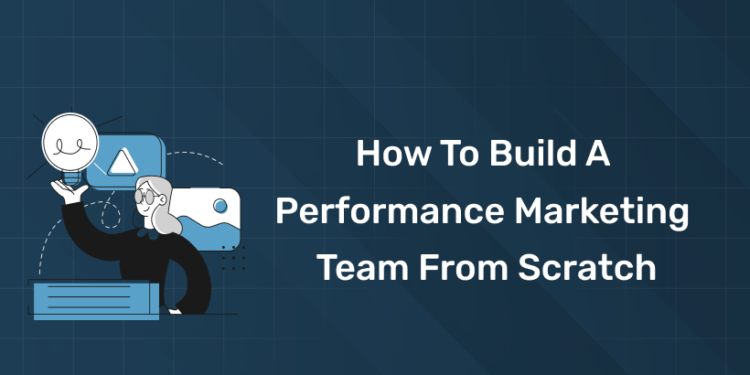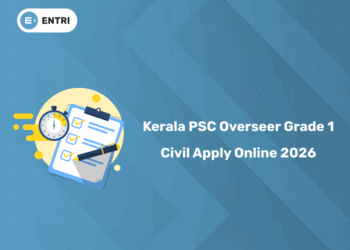Table of Contents
Key Takeaways:
- Building a high‑performing performance marketing team requires clear roles, robust processes and alignment with business goals every team member should understand metrics and outcomes.
- Key roles to recruit include: Performance Marketing Lead/Manager, Media Buyers/Specialists (e.g., Search & Social), Data/Analytics Specialist, Creative/Copy Support, and Marketing Ops/Automation.
- Typical team structures vary by size and scale. For aspirants and professionals looking to join or build such a team, you must develop skills across paid media platforms, analytics, attribution, automation, and cross‑channel workflows.
- Even though our primary focus is on performance marketing teams, engineers and professionals from other domains can benefit from cross‑functional marketing teams especially in digital/tech‑driven organisations.
- Building the team isn’t just about hiring it’s about defining strategy, setting up measurement frameworks, establishing automation, aligning creative + media, and scaling in phases.
Introduction
In 2026 and beyond, performance marketing isn’t a side function it’s core to business growth. Brands and agencies are seeking teams that can deliver measurable outcomes (leads, conversions, ROAS) rather than just run campaigns. If you’re a digital marketing aspirant or working professional aiming to build or lead such a team, this blog outlines the full build‑from‑scratch roadmap: from defining strategy, sizing your team, key roles, processes, technology stack, to how to scale and measure success.
We’ll walk you through:
- Why you need a team structured for performance marketing
- How to define roles and responsibilities
- How to recruit or upskill team members
- Processes and frameworks (campaign setup, measurement, optimisation)
- Tech stack & automation necessities
- Scaling the team as business grows
- How the Entri AI‑powered Digital Marketing Course ties in.
Let’s get started.
Define Your Mission, KPIs & Strategy
1: What is the primary goal of SEO (Search Engine Optimization)?
Before you hire anyone, you must set the foundation.
1. Clarify Business Goals & KPIs
Ask: What outcomes does performance marketing need to deliver? Common KPIs include cost per acquisition (CPA), return on ad spend (ROAS), lifetime value (LTV) of acquired users, conversion rate (CVR), incremental revenue.
For example, if you’re working in the Indian digital market, you might aim: “Reduce cost per purchase by 20 % in Q4”, or “Increase mobile app installs in Hyderabad region by 30 % while maintaining ROAS at 4×”.
2. Define Scope and Budget
- What channels are you using? (Search, Social, Display, Programmatic)
- What budget ranges? Are you a small startup, growth‑stage company or large enterprise? Article data shows team size and structure should align with business size and complexity.
- What markets/geographies? If India‑centric (Hyderabad, Bengaluru, etc) vs global? The team must reflect local market nuances (mobile‑first, regional language, audience behaviour).
3. Choose Your Strategy & Team Build Model
Two common models for structuring performance marketing teams: platform‑based (each person owns a platform: Meta Ads, Google Ads, DSP) and discipline‑based (roles by expertise: media buyer, analyst, creative).
Decide what works for your organisation.
- For lean startups: hybrid roles (one person may handle multiple channels).
- For growth stage: dedicated specialists.
- For enterprise‑scale: dedicated teams per channel, central analytics hub, shared creative.
4. Set Processes Early
Define workflows: campaign brief → creative production → media buy → tracking setup → optimisation → reporting. Choose tools (project management, dashboards). Outline responsibilities and hand‑off points.
Once strategy, budget, and structure are defined, it’s time to build your team.
Become an AI-powered Digital Marketing Expert
Master AI-Driven Digital Marketing: Learn Core Skills and Tools to Lead the Industry!
Explore CourseKey Roles & Responsibilities
Here’s a breakdown of the essential roles you’ll need in a performance marketing team from scratch. You don’t need all at once scale as you grow.
1. Performance Marketing Manager / Lead
Responsibility: Owns the performance marketing function. Oversees team, sets strategy, ensures budgets align to outcomes, reports to senior leadership.
Skills needed: Paid media expertise, data analysis, budget forecasting, cross‑channel knowledge, stakeholder management.
When you need this role: From the outset if you’re building a dedicated team. In early stage, founder or senior marketer may fill this role.
2. Media Buyers / Channel Specialists
These are the hands‑on campaign executors. Useful breakdown:
- Paid Search Specialist (Google Ads, Bing)
- Paid Social Specialist (Meta, LinkedIn, TikTok)
- Display / Programmatic Specialist (DSPs, retargeting, mobile‑app ads)
According to a guide: “Paid media manager, paid social specialist, display advertising specialist, data analyst” are key hires.
Skills: Platform knowledge, targeting, bidding, budgeting, creative testing.
Ideal for: You can hire specialists when you have sufficient budget; early on you may hire a generalist covering 2‑3 channels.
3. Data / Analytics Specialist
Responsibility: Makes sense of campaign data, builds dashboards, runs attribution modelling, A/B testing frameworks, provides actionable insights. Guides optimisation.
Skills: Google Analytics 4, Looker/Data Studio, SQL or data querying, Excel/Sheets, understanding of attribution and funnel metrics.
Vital because performance marketing is defined by outcomes and data.
4. Creative & Copy Support
Responsibility: Works closely with media buyers to develop creatives (ads, landing pages, visuals, videos) aligned with campaigns. Tests variants.
In small teams this person may be part‑time or outsourced.
Skills: Basic design (Figma/Canva), copywriting for ads, understanding of mobile‑first user, creative testing mindset.
5. Marketing Operations / Automation / Tracking Lead
Responsibility: Sets up tracking (pixels, UTM, tag manager), ensures data flows correctly, manages martech stack, helps automate repetitive tasks.
Skills: Tag management, marketing automation tools, basic scripting or workflow automation, understanding of data governance and privacy.
Especially important as tools evolve (cookie‑less world, first‑party data).
6. Additional Roles as You Scale
- Growth/Acquisition Specialists (apps, affiliate, partnerships)
- Retention / Lifecycle Marketing Specialist (once acquisition is working)
- Regional Specialists (if you’re targeting Indian languages, regions)
- Creative/Data‑Science Hybrid roles
- Team leads for each channel when team size grows.
This scaling approach aligns with structured team growth practices.
Hiring & Upskilling Your Team
1. Hiring the Right People
- For startup phase: Hire versatile generalists who can cover multiple roles.
- Use job descriptions that mention specific platforms and metrics (CPA, ROAS).
- Include live campaign‑experience requirement or hands‑on case study in interviews.
- Prioritise culture: data‑mindset, testing orientation, agility.
- For Indian market: If you’re hiring in cities like Hyderabad, Bengaluru or Mumbai, local market familiarity (mobile behaviour, regional languages) is a plus.
2. Training & Upskilling
- Even with the right hires, invest in continuous training: platforms evolve fast.
- Provide access to training courses e.g., Entri AI‑powered Digital Marketing Course helps team members build or refresh skills across paid media, analytics, automation.
- Encourage internal knowledge‑sharing: campaign post mortems, A/B test learnings.
- Use mentorship or buddy system especially if team size is small.
3. Defining Career Paths
Performance marketing professionals value measurable growth: Define career ladders:
Specialist → Senior Specialist → Lead → Manager → Director.
Align with salary bands, responsibilities. This helps retain talent.
Processes, Measurement & Tools
4.1 Campaign Planning Framework
- Brief: Define objective (acquisition, retention), target audience, budget, timeline, KPI.
- Creative brief: What message, formats, channels, region?
- Media plan: Channel mix, allocation, bidding strategy, tools.
- Tracking setup: Ensure pixels, UTMs, conversion events are defined before launch.
- Launch → Monitor → Optimise → Report.
4.2 Tools & Stack Essentials
- Paid media platforms: Google Ads, Meta Ads, LinkedIn/TikTok, DSPs.
- Analytics: Google Analytics 4, Looker/Data Studio or Tableau.
- Tag Management: Google Tag Manager or similar.
- Marketing Automation: Mailchimp, HubSpot, Iterable (for retention).
- Creative tools: Canva, Figma, video editors.
- A/B testing tools.
- Dashboard & reporting tools.
Make sure the team knows tool‑stack and is comfortable with them.
4.3 Measurement & Attribution
- Define correct attribution model: last click, multi‑touch, incremental lift.
- Build dashboards for each channel + overall performance.
- Monitor KPIs: CPC, CPA, CVR, ROAS, LTV.
- Ensure learnings feed back into the process: e.g., creative tests, audience tests.
- Publications emphasise measuring results through data and setting clear metrics.
4.4 Optimisation & Scaling
- Once campaigns are running: review performance weekly, bi‑weekly.
- Scale what works: increase budget, expand audiences or channels.
- Retire what isn’t working: poor ROI, high CPA, non‑scalable.
- Automate repetitive tasks: rule‑based bidding, automation scripts, creative adjunction.
- Culture of testing: each campaign must have hypothesis, control vs variant, measurement of lift.
Become an AI-powered Digital Marketing Expert
Master AI-Driven Digital Marketing: Learn Core Skills and Tools to Lead the Industry!
Explore CourseScaling the Team as You Grow
1. From Small Team to Full‑Scale Department
-
- Early phase (1‑3 people): Media buyer + analyst + maybe part‑time creative.
- Growth phase (4‑8 people): Dedicated specialists for each channel, analytics lead, operations.
- Enterprise phase (8+ people): Channel leads, regional leads, dedicated creative team, data science, retention/growth teams. Guidance: “business scale vs team size” models.
2. When to Hire More
- When budget and channels increase and internal team is hitting capacity.
- When new channel/region is added (e.g., Indian regional language campaigns).
- When you need more specialisation: e.g., app install campaigns, Amazon Ads, programmatic.
3. Team Culture & Collaboration
- Performance marketing is cross‑functional: media + analytics + creative + product + design must collaborate.
- Encourage communication: weekly standups, review meetings, shared dashboards.
- Create shared ownership of metrics and outcomes rather than siloed channel teams.
- Training and career development keep the team motivated.
4. Budget & Resource Planning
- As you scale, you need clear budget allocation for media spend, team salaries, tools.
- Use resource planning for headcount, tool licences, training expenses.
- Regular reviews of media spend vs team outputs to justify expansions.
Upskill with Entri’s Performance Marketing Course
If you’re building a career or a team in performance marketing, one thing is clear: to get ahead you need to be properly trained. The Entri Performance Marketing Course is the real deal, offering a structured way to learn and level up your skills in areas like:
- Paid advertising on Google, Meta and TikTok – the platforms everyone wants to master
- Being able to read and make sense of the analytics & dashboards that are used to measure success
- Mastering automation and AI tools to get a step ahead in marketing
- Understanding how to make your campaigns better, better – through optimisation, audience testing and measuring what works
- And let’s be honest, everyone knows the Indian market is mobile-first and local languages are the key to success, so it makes sense to learn about that too
By getting on board this course – or pushing it on to your team – you can be sure everyone’s on the same page when it comes to performance marketing and can actually run and measure campaigns that deliver real results. Whether you’re just starting out or looking to move into a management role, this course is key to building a team with the skills where you need them most.
Common Mistakes & How to Avoid Them
- Hiring too many people too soon: Start lean, validate channels and budget, then scale.
- Unclear roles & overlap: Each hire must have clear responsibilities. Avoid stepping on each other’s toes.
- Ignoring measurement and attribution: Without sound analytics, you’ll spend blindly.
- Poor collaboration between media and creative: Great creative + poor media = wasted budget, and vice versa.
- Lack of training/upskilling: Ad platforms evolve quickly; static team skills lead to stagnation.
- Not aligning with business goals: Performance marketing must tie to revenue/growth not just impressions.
Avoiding these pitfalls sets your team up for success.
Conclusion
This is a strategic process in building a performance marketing team from scratch. It starts with set goals and KPIs, moves into roles and hire, defines processes and tools, and scales with the business. You will succeed if you know the structure, find the right people, define measurement principles, and continue to develop both yourself and your team to be an ideal candidate for joining such a team or building one.
If you need to start a team or come in, check out the Entri AI-powered Digital Marketing Course. It equips you and your team with the performance marketing skills that will be necessary in 2026 and beyond: paid media, analytics, automation, regional marketing, mobile-first campaigns. Start with defining your strategy, developing your first hires, developing your tools and metrics, and then iterating, optimizing and scaling.
You’re not just building a team, you’re building a performance engine for making business results. Good luck, and here’s to building a well-run marketing team that drives growth!
Frequently Asked Questions
What is a performance marketing team?
A performance marketing team manages all paid digital channels (Google Ads, Meta Ads, programmatic, and analytics) to drive measurable results like conversions, leads, or revenue.
How do you start a performance marketing team from scratch?
Start by defining business KPIs, hiring a performance lead, and setting up essential tools like Google Ads, Meta Ads, GA4, and tracking systems. Build gradually by adding creative and data specialists.
Who should be the first hire in a performance marketing team?
Your first hire should be a Performance Marketing Manager or Lead who understands campaign strategy, budgeting, analytics, and can build processes for scaling.
What roles are required in a performance marketing team?
Core roles include Performance Marketing Lead, PPC Specialist, Creative Producer, and Analytics/Data Specialist. As the team grows, you can add Automation, CRM, and Growth Engineering roles.
What are the key skills required in a performance marketing team?
Skills include paid ads management, GA4 analytics, A/B testing, copywriting, creative design coordination, automation tools (like Supermetrics, Zapier), and strategic decision-making.
What is the best team structure for a small business?
For small businesses, start with a lean team, one Performance Lead, one PPC Executive, and one Creative Designer, and outsource data analytics or video production until scale.
How do you measure the success of a performance marketing team?
Track KPIs such as ROAS, CPA, CAC, Conversion Rate, and LTV. Use tools like Looker Studio or Power BI to build live dashboards and track campaign performance weekly.
What are the common challenges in building a performance marketing team?
Challenges include unclear KPIs, lack of tracking setup, poor creative testing cycles, and limited analytics capabilities. Regular training and structured reporting fix most of these.
How can digital marketers upskill to lead performance teams?
Professionals can enrol in Entri’s performance Marketing Course, which teaches ads strategy, analytics, automation, and leadership skills needed for modern performance roles.
What tools should every performance marketing team use?
Essential tools include Google Ads, Meta Ads, Google Tag Manager, GA4, Looker Studio, Canva, and project tools like Asana or Trello for workflow management.















